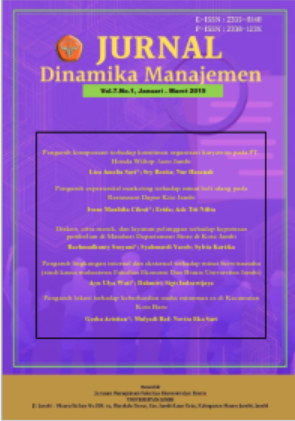Faktor-Faktor Yang Mempengaruhi Pendapatan Petani Karet Di Kabupaten Sarolangun
DOI:
https://doi.org/10.22437/jdm.v12i2.33714Abstract
Agriculture in Indonesia has an important role in development, including in Jambi Province, where most of the population lives in rural areas and depends on the agricultural sector. However, there is still a problem of economic inequality between rural and urban areas, especially related to income. This study was conducted in Sarolangun Regency to examine economic growth and per capita income. The data shows an increase in per capita income from 2005 to 2006. The plantation sector, especially rubber, has an important role in the economy of Sarolangun District. The research method used was a survey with primary and secondary data collection. The sample consisted of 40 rubber farmers. The analysis included farmers' socioeconomic characteristics, such as age, education, number of family members, and farming experience. The results showed that the majority of farmers were of productive age, with a low level of education. The number of family members affects income levels, and farming experience also plays an important role. Constraints faced by farmers include traditional land management and weather impacts. Farming costs, especially labor costs, affect income. Net income per hectare of rubber land varies depending on productivity and prices. Efforts are needed to increase productivity and overcome constraints faced by farmers to improve their welfare
Downloads
References
Adelman, Chintya, Arsyad. 1992. Pendataan Statistik Tanaman Perkebunan Kabupaten Madina. Madina.
Arif, Wong. 1977. Petunjuk Lengkap Budidaya Karet. Agromedia Pustaka. Jakarta.
Arief, 1979 Pertanian Pada Abad ke-21. Direktur Jenderal Pendidikan Tinggi Departemen Pendidikan dan Kebudayaan. Jakarta
Kuncoro, Hasibuan. (1997) Manajemen Pemasaran, Jilid 1. Indeks Kelompok Gramedia. Jakarta.
Kuznets, Arsyad. 1982. Karet Budidaya dan Pengelolaan. Penerbit Kanisius. Yogyakarta. Mulyanto dan Ever. Pengertian Abstrak Kehilangan Hasil Pada Tanaman Perkebunan. http:// Agribisnis. deptan.go.id
Mubyarto, 1989. Basis Data Statistik Pertanian http://Primatani. litbang.deptan.go.id
Partadireja,1989. Pengantar Ekonomi Pertanian. Bumi Aksara. Jakarta. Soekartawi. 1993. Pertanian karet, perkebunan Departemen pendidikan ciamis.
Susanti, 1995. Analisis Efektifitas dan Efesiensi Tataniaga Kopi di Propinsi Lampung. Fakultas UNILA Lampung.
Syaparuddin, 1999. Tanaman Perkebunan Rakyat Mandaiiliing Natal http://www: sumutporow.go.id/ongkam.php
Tjahyono, 1987. Tata Niaga Hasil Pertanian. Diktat Fakultas Pertanian . Unika ST. Thomas SU. Medan
Winardi.2000. Harga dan Penetapan Harga dalam Bidang Pemasaran (Martketing) Bandung PT Citra Aditya Bakti
http:/www.google.com. Tujuan dan Manfaat Penelitian 06 Agustus 2014 Http:/www.google.com. Luas Lahan Pertanian. 04 Agustus 2014
Mudrawati. 1984. Proses Komunikasi Bagian Penyuluhan Pertanian. Bandung: Fak Pertanian UNPAD (Tidak Diterbitkan).
Supranto. 2011. Sejarah Penelitian Bahan Karet: Perjuangan Charles Goodyear. (Online: http://www.sejarah-penemuan-bahan-karet-perjuangan-charles-goodyear/The-Nurdayat- Foundation.html). Diakses, 16 Maret 2014.
Priwanto. 2013. Prospektif Usaha Pembibitan Karet Di Pedesaan. Blog: Reisma Al Mubarokh. Teqla, Monica. 2011. Analisis Faktor-Faktor yang Mempengaruhi Volume Ekspor Karet di Indonesia. Medan: Universitas Sumatera Utara.
Online: http://www.tujuan-dan-manfaat-penelitian-ilearning-me/kkp/bab-1/1- 3.html).Diakses, 9 Mei 2014.
Downloads
Published
How to Cite
Issue
Section
License
Copyright (c) 2024 Sabyan Sabyan, Iqra Wiarta

This work is licensed under a Creative Commons Attribution-ShareAlike 4.0 International License.




